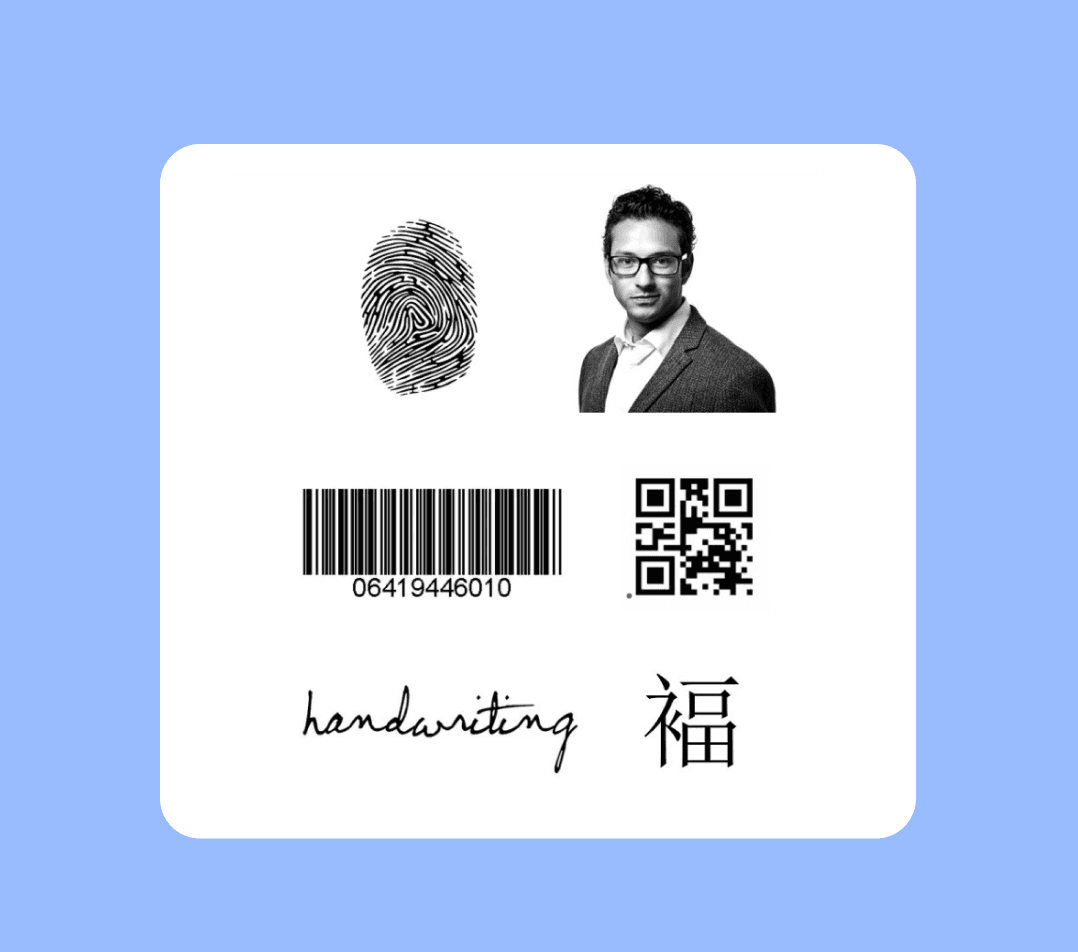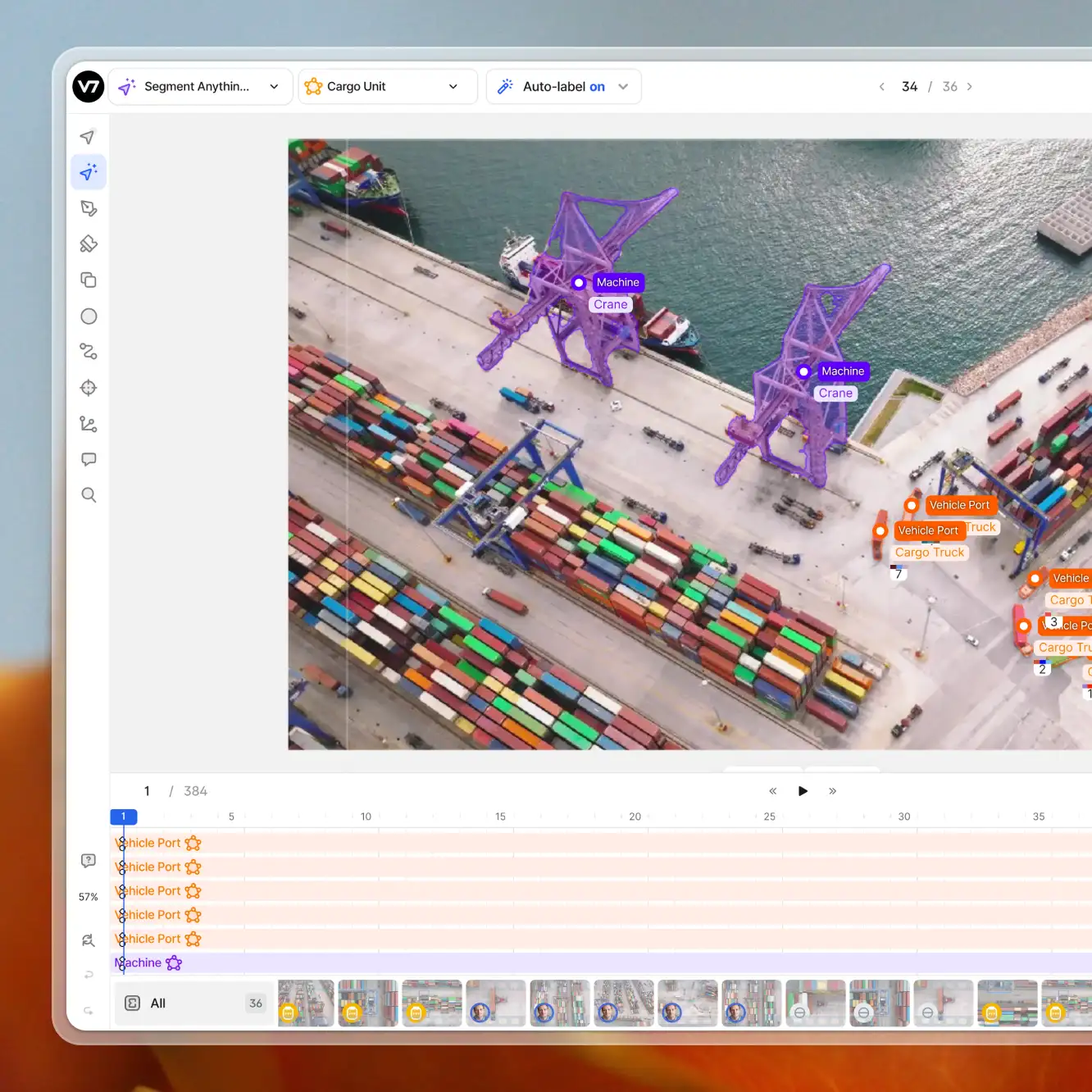Computer vision
Pattern Recognition in Machine Learning [Basics & Examples]
13 min read
—
Sep 13, 2022
Pattern recognition in machine learning refers to the process of identifying patterns in data. Explore different pattern recognition techniques and use cases.

Guest Author and Software Developer
For humans, pattern recognition is a cognitive process in the brain. We can effortlessly match the information we see with the data stored in our memories. We can instantly differentiate between an image of a flower and an animal or identify a familiar face while scrolling Instagram.
But have you ever wondered how new technologies like Alexa or Google Image Search work?
Isn’t it intriguing and exciting to see Alexa acknowledge you by name when you say
Hey Alexa, play some music!
Techniques for finding patterns in different forms of data have undergone substantial development over the past decades.
Here’s what we’ll cover:
Pattern recognition and machine learning
Patterns in terms of data
How does pattern recognition work?
Advantages and challenges of pattern recognition
Applications of Pattern Recognition in real life
Ready to streamline AI product deployment right away? Check out:
Pattern Recognition and Machine Learning
Pattern recognition happens in our brains when we match the information we engage with data stored in our memory. Pattern recognition receptors (PRR) in our body have a specific mission to identify and tackle pathogenic and damage-associated molecular patterns. But that’s biology and not technology.
In machine learning, pattern recognition is a technology that matches the information stored in the database with the incoming data by identifying common characteristics.
Sometimes people get confused about machine learning and pattern recognition. To simplify this, let’s say that pattern recognition is a type of machine learning.
What Is Pattern Recognition?
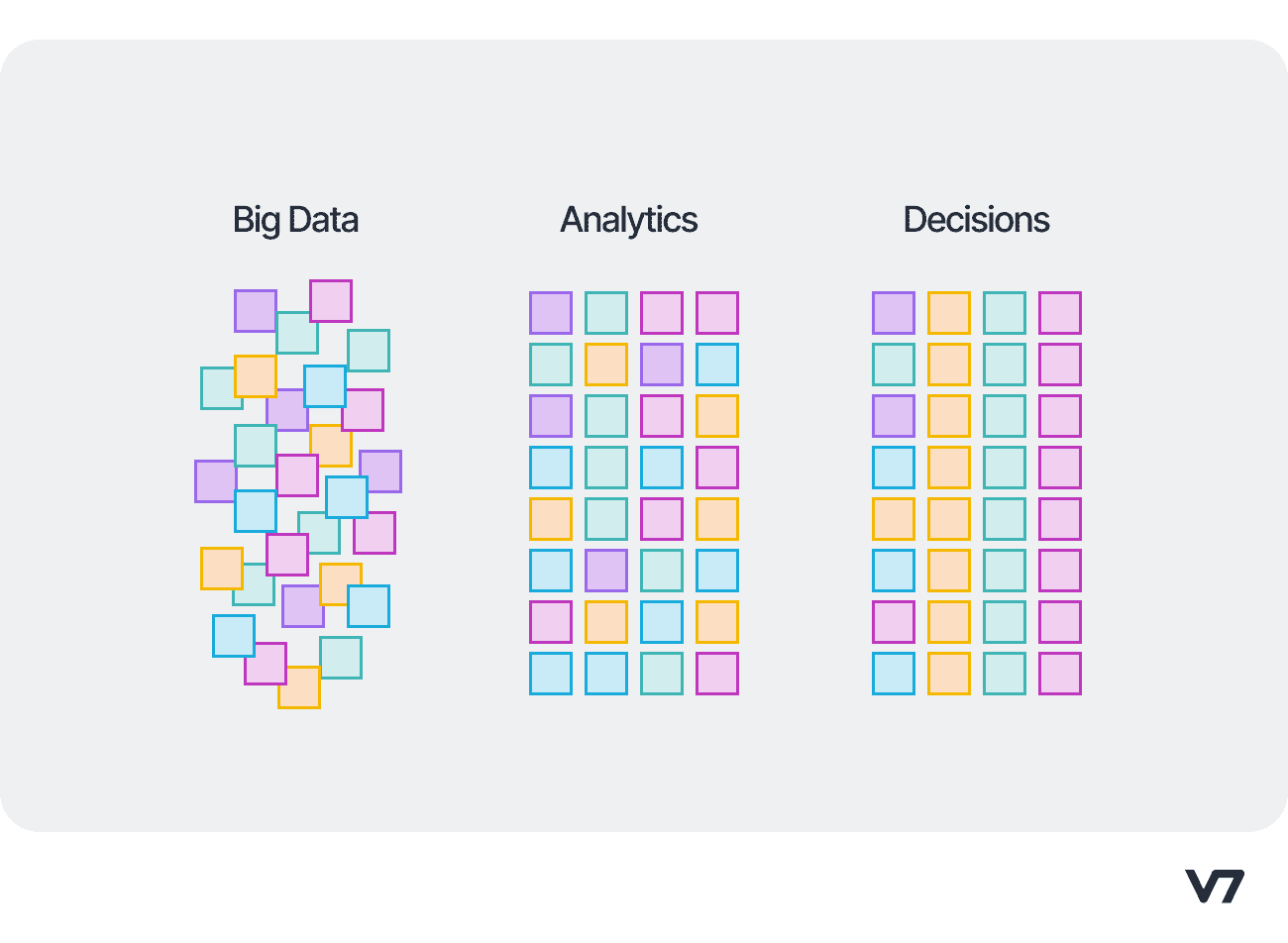
Data pattern recognition
Pattern recognition is a derivative of machine learning that uses data analysis to recognize incoming patterns and regularities. This data can be anything from text and images to sounds or other definable qualities.
The technique can quickly and accurately recognize partially hidden patterns even in unfamiliar objects. Pattern recognition involves classifying and clustering data points based on the knowledge derived statistically from past representations.
Pro Tip: To learn how to annotate text data efficiently, check out our Step-by-Step Guide to Text Annotation
What Are Patterns in Terms of Data?
Pattern recognition involves processing raw data entities into clustered patterns or features.
Patterns are data characteristics that can be continuous, like the spectral features of speech, or discrete/binary, like in the case of text or images. A patttern usually has a vector representation.

Examples of different types of input data for pattern recognition models
The patterns learned by machine learning models mathematically (by statistical pattern recognition techniques) are assigned to a target class based on the abstraction generated using the domain knowledge and features extracted from the input data.
How Does Pattern Recognition Work?
Now, let’s move on to discuss the component parts of the pattern recognition technique—
Finding Patterns in Data
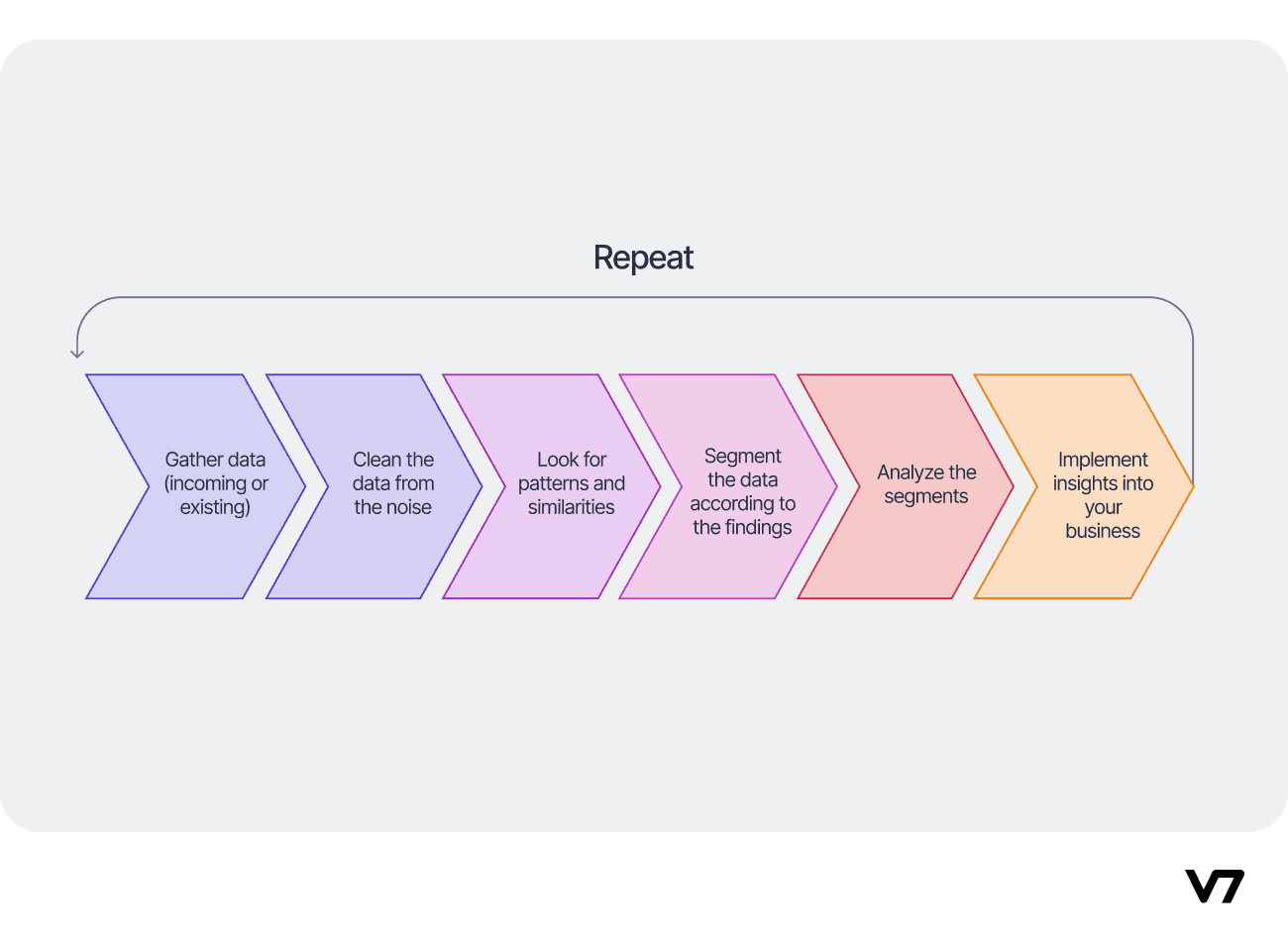
Data acquisition and preprocessing
A pattern recognition system can work with any type of data like text, video, audio, etc., and preprocess this input data. This stage is essential as it focuses on data augmentation and filtering the noise from the system.
Pro Tip: Check out our article: A Simple Guide to Data Preprocessing in Machine Learning
Data representation
The neural network then analyzes the filtered data to derive and uncover meaningful information. The extracted features get segmented into what constitutes the patterns.
Decision making
The identified inherent patterns and insights are fed into the model for either class prediction (labeled dataset), cluster prediction (unlabeled dataset), or value prediction (where regression comes into play) based on the business use case.
Pro Tip: To learn more about the importance of training data quality, head to our dedicated guide: An Introduction to Quality Training Data for Machine Learning
Stages of Pattern Recognition
Pattern recognition is a branch of machine learning that emphasizes the recognition of data patterns. There are two main parts to it:
Explorative Pattern Recognition—aims to identify data patterns in general. The algorithms focus on looking for hidden patterns or clusters of features in the data. They mainly rely on the unsupervised classification that assigns the input pattern as an undefined class.
Descriptive Pattern Recognition—aims to categorize the detected patterns and identify them as part of a predefined class. It mainly uses supervised classification.
Pattern recognition is often a classification or categorization task. The classes are either defined by the system (in the case of supervised classification) or learned based on the similarity between patterns (as in unsupervised classification).
Pro Tip: Read our in-depth article to learn more about the differences between supervised and unsupervised learning and see examples.
Types of Pattern Recognition Models
The major approaches to pattern recognition define the different types of models that are used in common:
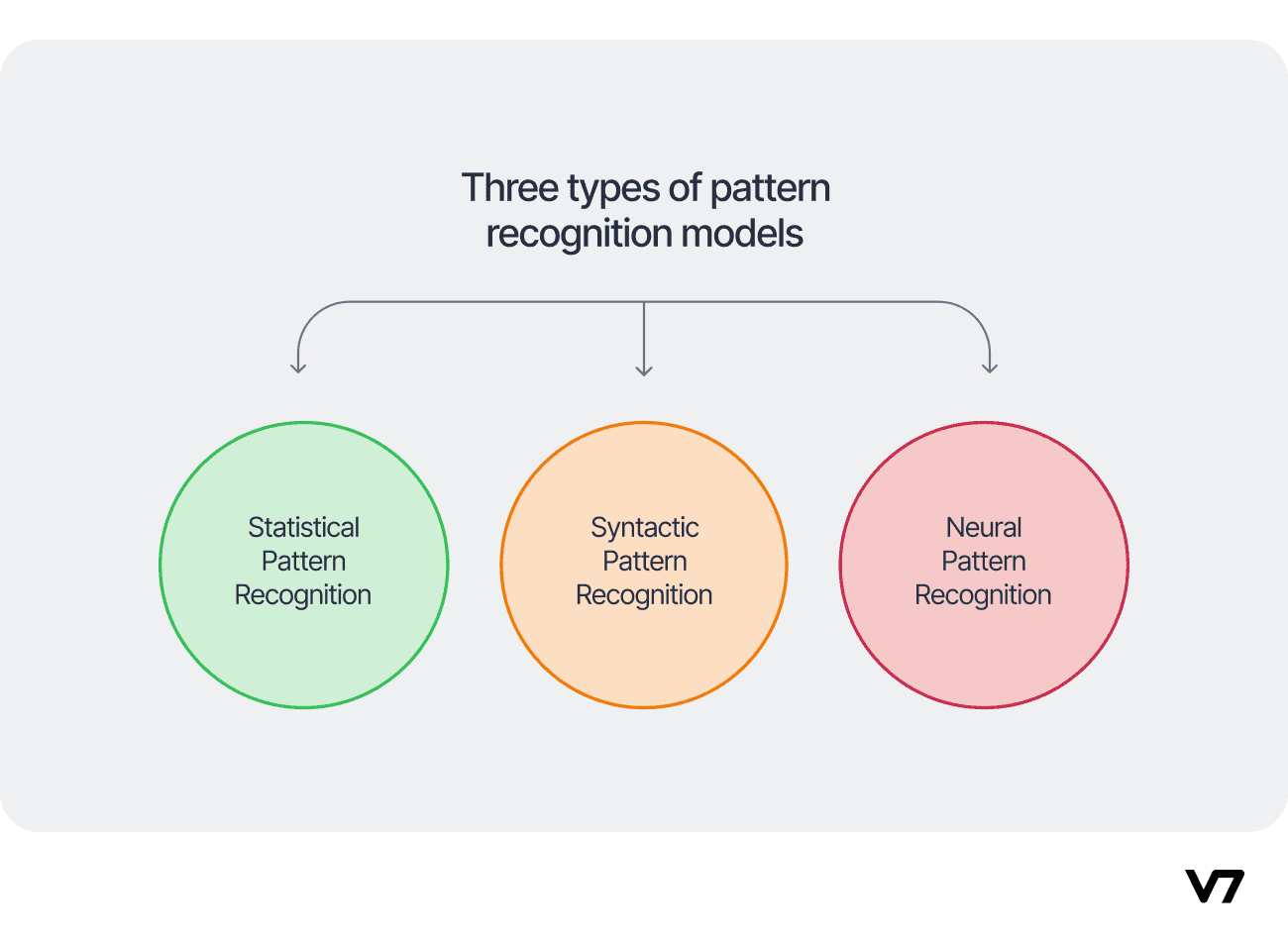
Types of pattern recognition models
Statistical Pattern Recognition
As the name suggests, this model relies on historical data points and statistical techniques to learn the features and patterns from the data. This includes collecting observations, studying and analysing them to infer general rules or concepts that can be applied to new, unseen observations.
The pattern is grouped based on its features, and the number of features determines how the pattern is viewed as a point in a d-dimensional space. It follows this simple technique to recognize patterns:
Representation. Identifying the way the objects are related maybe by a n-dimensional vector space.
Generalization. The rules and concepts that can be derived from a given representation of the set of examples, and can be therefore applied to unseen data points.
Evaluation. Accuracy and trustworthiness estimates of the model to assess the system's performance.
For example, this model is handy when developing AI for the financial sector to predict stock prices based on past market trends and extrapolate market conditions from past data.
Syntactic Pattern Recognition
Patterns that include structural or relational information are hard to quantify as feature vectors due to their underlying complexity. In such cases, statistical pattern recognition may prove insufficient.
However, you can classify data based on structural similarities in data patterns. That’s why syntactic pattern recognition techniques work for picture recognition and scene analysis, where patterns are complex and the number of features is extensive.
Breaking complex patterns into simpler hierarchical sub-patterns comes in handy for recognizing roads, rivers, or humans in images, or syntax and grammar in text.
Neural Pattern Recognition
By far, it’s the most popular technique for detecting patterns, thanks to the amount of complexity it can handle.
An Artificial Neural Network is a computational system modeled after the neural network architecture, similar to how the human brain processes complex signals.
It can learn to recognize patterns in various data types (e.g., textual, visual, or audio), and works efficiently with unknown data.
Template Matching

Object identification using template matching
This technique matches the object's features with the predefined template and identifies the object by proxy.
It’s commonly used in computer vision for object detection in such fields as robotics, vehicle tracking, and others to find small sections of an image that match the template.
In medical imaging, for example, nodules are detected via template matching techniques.
Pro Tip: Explore our list of innovative AI applications in healthcare.
Advantages and Challenges of Pattern Recognition
Now let’s have a quick look at the pros and cons of the pattern recognition technique.
Pattern Recognition—Advantages
✅ Pattern recognition helps to solve classification scenarios like biometric detection problems, and classification of nodules into tumourous/non-tumourous cells in medical imaging.
✅ Pattern recognition is useful for object detection, especially for identifying distant and hidden objects, or ones visible at different angles than in the input data. AI models can make nuanced observations and correlate multiple patterns across vast amounts of data, which is one of the most valuable applications of pattern recognition.
✅ Pattern recognition is adept at summarizing all feature vectors and data patterns, which enables it to forecast stock prices and make accurate extrapolated predictions in general.
Pattern Recognition—Challenges
❌ Pattern recognition tends to be data-hungry. In other words, much training data is required to train neural networks for pattern analysis. Storing such huge amounts of data may further limit pattern recognition applications.
❌ Issues with data quality. Training data for machine learning algorithms should come from reliable sources. It should be free from bias and noise that hamper inherent pattern identification and decision-making capabilities of the neural network.
❌ Long training time. Identified patterns are not only hard to analyze but also take a lot of time to gather data, preprocess it, and train the model.
Applications of Pattern Recognition
Pattern recognition has a number of more and less known applications across various industries.
Stock Market Prediction
Predicting future stock values is one of the most challenging tasks. Initially, linear and decision machine learning models were used, but now deep learning models are used as well. Many traders use chart patterns, combined with other pattern recognition algorithms involving deep learning and LSTM, to make their trading decisions and do stock market forecasting.
Pro Tip: check out AI for Financial Statements to learn more about recent applications of this technology.
Audience Research
Pattern recognition serves as a way of describing data by highlighting its distinct features, which are themselves patterns. It's used to analyze available user data and segment it by selected features.
Google Analytics is one prominent source of such features. Data collected by Google Analytics can be related to what a customer intends to buy when they visit a particular website, the number of people who viewed a post, and whether they had any interaction with the content, such as clicks. Reviewing transaction data could help in the identification of behavioral segmentation patterns within website visits and e-commerce transactions.
Many OTT platforms and e-commerce companies rely on complex AI engines that analyze patterns of user behaviors to personalize their offerings. Netflix's "You might also like" and Amazon's "People also buy" are examples of this.
Text Pattern Recognition
Pattern recognition is a way of identifying the building blocks in text, like words, grammar, and the pattern it follows. This is used in grammar checkers, machine translations, content categorization, and more.
Customer Feedback
In the business world, text processing is used a lot to improve customer service. Pattern recognition systems look for helpful information in customer feedback and product reviews. This includes things like the keywords used, how the customer feels, and what they want. This is important for things like competitor and market analysis. We can learn about what people think of a company, where they are located, and more.
Optical Character Recognition (OCR)

Example of scanned and annotated text
Optical character recognition, or OCR, is a technology that allows you to convert scanned documents, screenshots, and other digital images into editable and searchable electronic files. OCR saves time and increases efficiency by eliminating the need for manual data entry. To perform OCR, digital images are first segmented and processed to detect optical patterns. These patterns are then classified as letters, numbers, symbols, etc. In the banking sector, OCR is also used in signature verification.
Pro Tip: Explore V7’s tools for intelligent document processing.
Chatbots
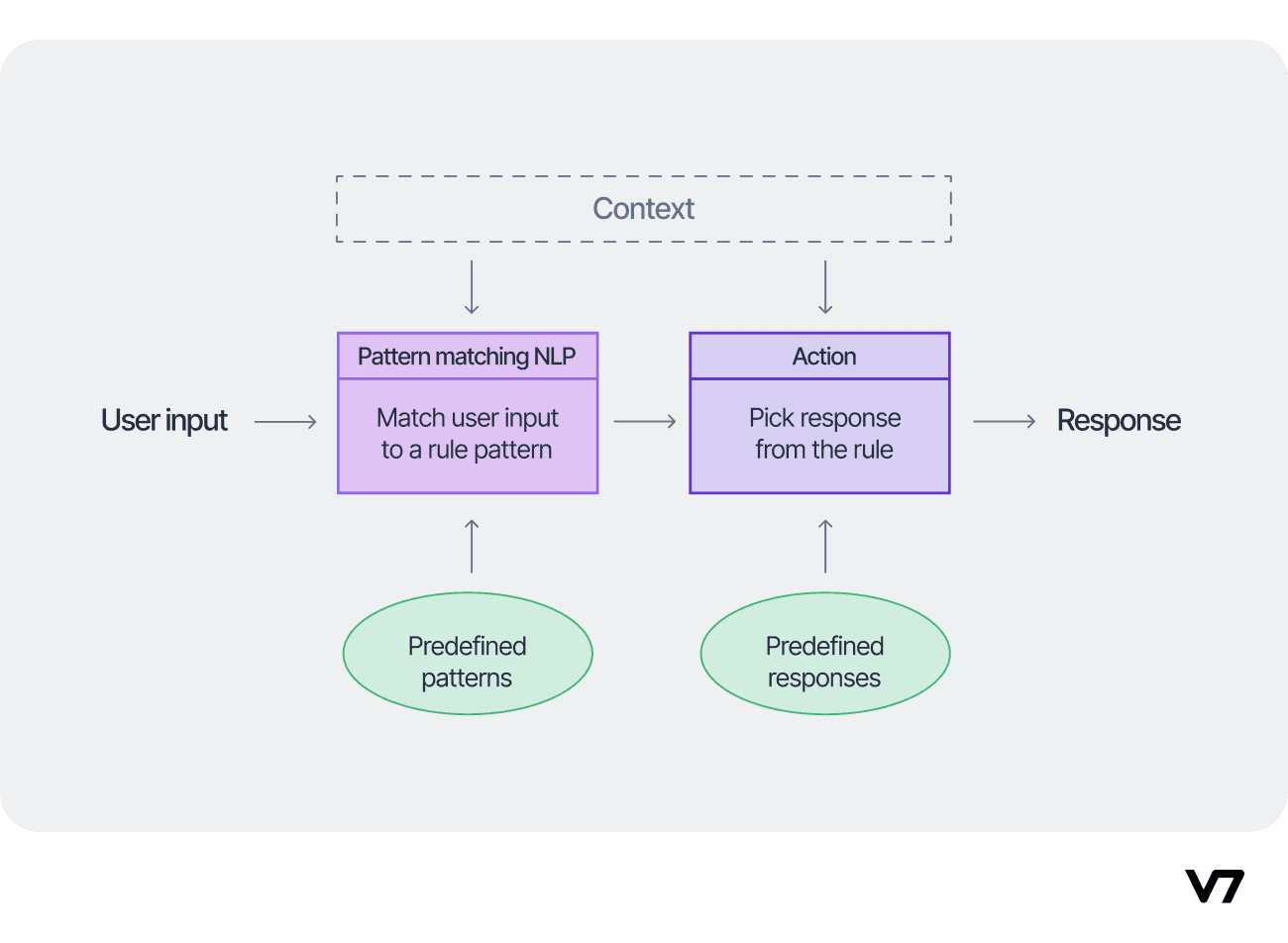
Chatbot: Working under the hood
Every chatbot works by using a machine learning algorithm to classify the text based on the inherent pattern of the sentence and produce a suitable response. The curator of the system is responsible for mapping all possible patterns to the set of possible responses. This brute force technique using natural language processing as the core is another excellent example of pattern recognition applications.
Image Recognition
In images, pattern recognition can be used to find edges, lines, and shapes. This is used in image processing, computer vision, and more.
Medical Image Recognition
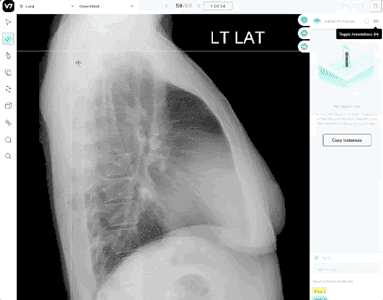
Automated image segmentation of lung in X-Ray [LINK]
One of the most common issues in medical imaging concerns poor quality, which makes it hard for radiologists to interpret the images.
To overcome this, computer vision techniques are used in biomedical imaging to detect the presence of tumors or identify the onset of diseases. This computer-aided diagnosis is done by observing meaningful features and abnormalities in the patterns that may be hidden from humans.
These pattern recognition techniques, coupled with image processing, are also used in drug development. For example, DNA sequencing played a major role in the development of the Covid vaccine.
Pro Tip: Check out this ultimate guide to medical imaging annotation.
Visual Image Search
Image processing and computer vision used by search engines and e-commerce marketplaces rely on pattern recognition techniques to support image search.
This works in the same way as an alphanumeric search query, but with images instead. Image metadata and additional textual hints increase the efficiency of the results and help to better filter the options based on the context.
For example, such technologies are widely applied by Google and Amazon.
Pro Tip: To learn more about ways to enhance the learning of computer vision tasks, have a look at this introductory guide to contrastive learning.
Voice Recognition
Pattern recognition is used in voice-activated devices to identify patterns in speech. This allows devices like car navigation systems, Alexa, and voice search engines to understand and respond to commands.
Speech recognition techniques are also used in text-to-voice and voice-to-text apps like Google Assistant. This allows people with visual impairments to hear and send back the text.
Voice assistants for businesses (like e-ecommerce) also use these techniques to provide around-the-clock support to millions of website and mobile app users.

Automatic speech recognition is a technology that can listen and respond to commands, saving people from having to type long commands. Automatic captioning is another technology that converts speech to text and then displays the text on a screen. This can be seen on YouTube or Facebook when subtitles are automatically generated for videos.

Working of voice assistants
Additionally, pattern recognition helps identify music that has been copied from another artist. By looking at the waveforms and amplitudes of the sound, experts can see if one piece of music is similar to another. This can help solve copyright issues for musicians.
Intrusion Detection Intelligence
Pattern recognition can be used to solve security concerns, for example by detecting civil unrest via social media.
A lot of data is generated on social networks every minute, and AI can help turn this data into useful information by detecting patterns. For example, Facebook uses pattern recognition to detect fake profiles created using other people’s profile photos.
Computer networks have intrusion detection systems that analyze the pattern of data and incoming traffic. Depending on the pattern of the data, it can judge any abnormalities or intrusion in the system and help prevent attacks on secure networks.
Check out our free Chrome extension, Fake Profile Detector
Key Takeaways
Pattern recognition technology is used in big data analysis to find combinations of inherent patterns that occur together frequently or rarely. This information forms the feature set for the data and helps in the prediction of unseen data.
There is an endless number of possibilities as pattern recognition is getting more futuristic and intelligent with a great impact on human life.
The future of pattern recognition applications lies in the domain of image processing, like medical diagnosis, object detection, computer vision, natural language processing, like handwriting recognition, and many more.
Pragati is a software developer at Microsoft, and a deep learning enthusiast. She writes about the fundamental mathematics behind deep neural networks.
